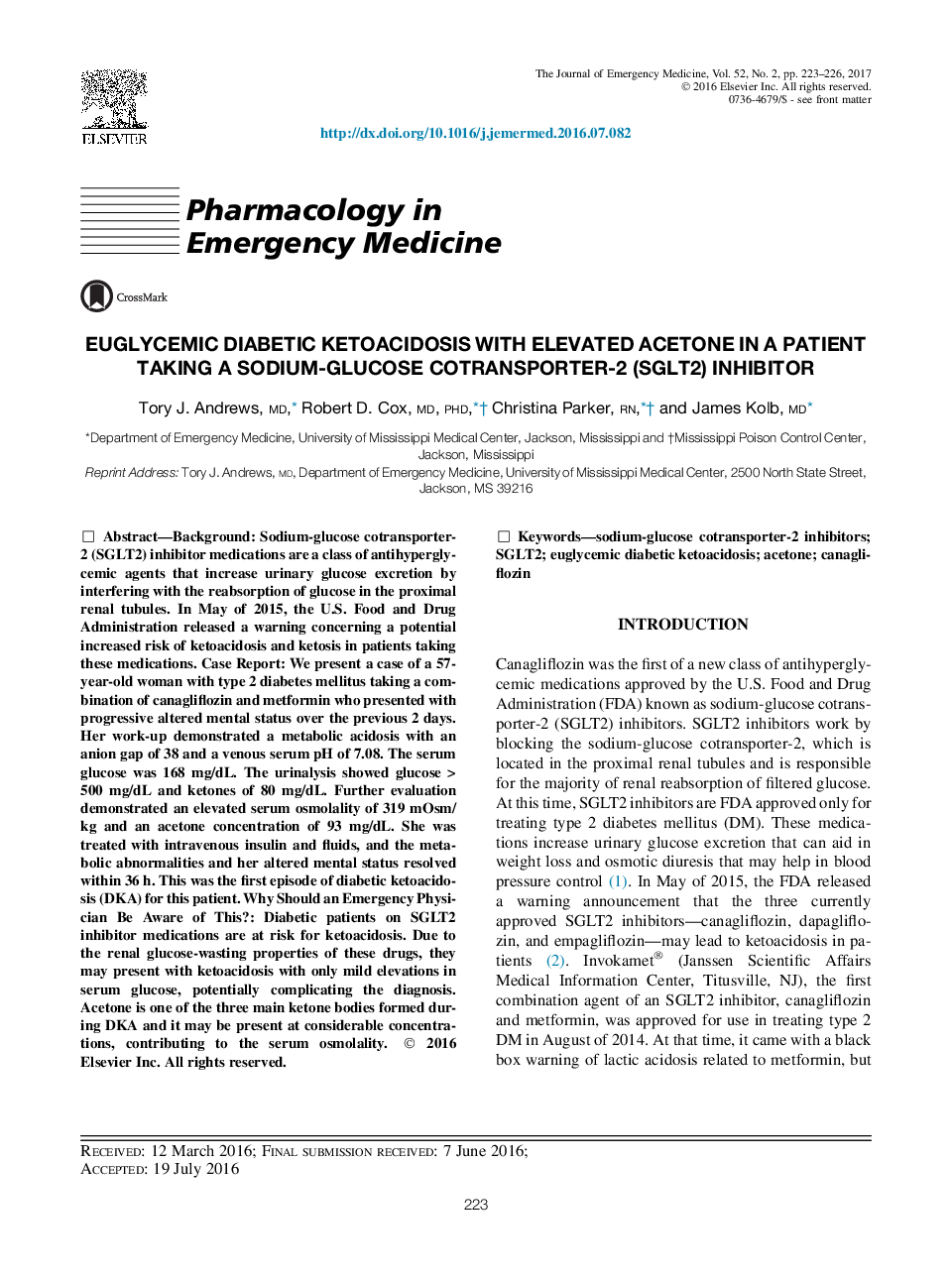| کد مقاله | کد نشریه | سال انتشار | مقاله انگلیسی | نسخه تمام متن |
|---|---|---|---|---|
| 5653998 | 1589104 | 2017 | 4 صفحه PDF | دانلود رایگان |

BackgroundSodium-glucose cotransporter-2 (SGLT2) inhibitor medications are a class of antihyperglycemic agents that increase urinary glucose excretion by interfering with the reabsorption of glucose in the proximal renal tubules. In May of 2015, the U.S. Food and Drug Administration released a warning concerning a potential increased risk of ketoacidosis and ketosis in patients taking these medications.Case ReportWe present a case of a 57-year-old woman with type 2 diabetes mellitus taking a combination of canagliflozin and metformin who presented with progressive altered mental status over the previous 2Â days. Her work-up demonstrated a metabolic acidosis with an anion gap of 38 and a venous serum pH of 7.08. The serum glucose was 168Â mg/dL. The urinalysis showed glucose > 500Â mg/dL and ketones of 80Â mg/dL. Further evaluation demonstrated an elevated serum osmolality of 319 mOsm/kg and an acetone concentration of 93Â mg/dL. She was treated with intravenous insulin and fluids, and the metabolic abnormalities and her altered mental status resolved within 36Â h. This was the first episode of diabetic ketoacidosis (DKA) for this patient.Why Should an Emergency Physician Be Aware of This?Diabetic patients on SGLT2 inhibitor medications are at risk for ketoacidosis. Due to the renal glucose-wasting properties of these drugs, they may present with ketoacidosis with only mild elevations in serum glucose, potentially complicating the diagnosis. Acetone is one of the three main ketone bodies formed during DKA and it may be present at considerable concentrations, contributing to the serum osmolality.
Journal: The Journal of Emergency Medicine - Volume 52, Issue 2, February 2017, Pages 223-226